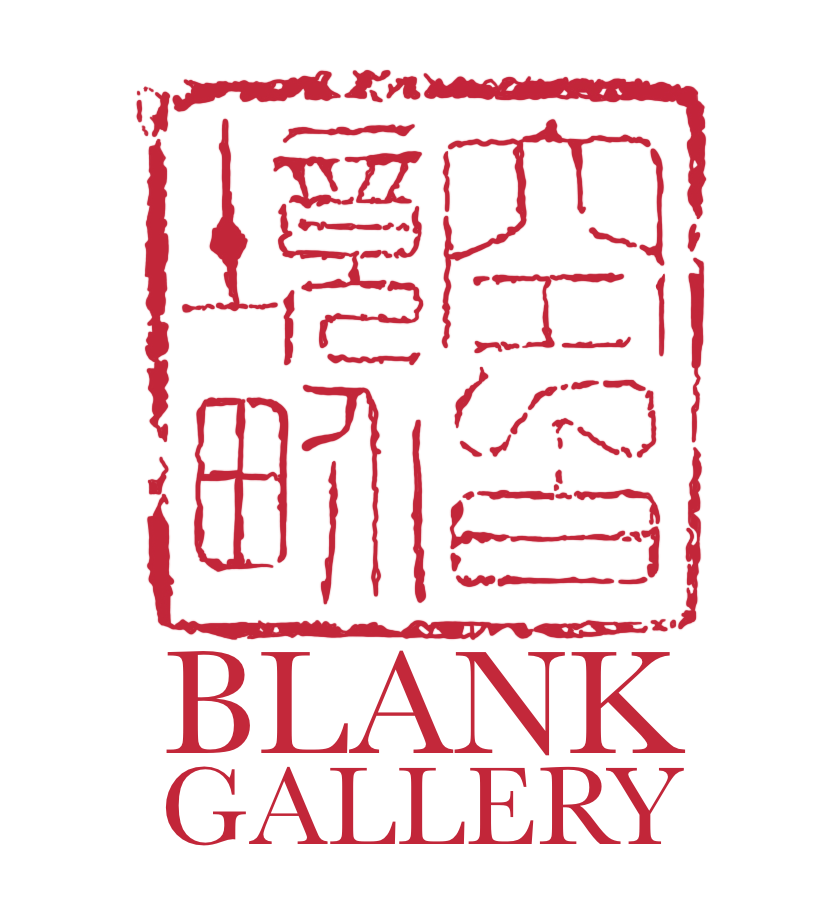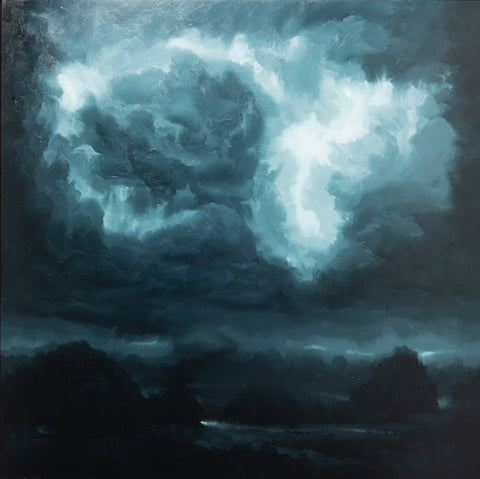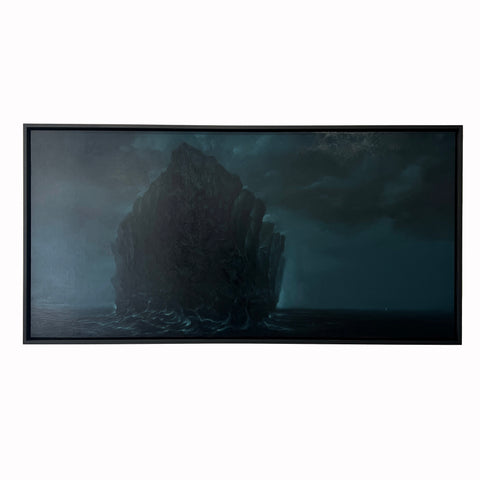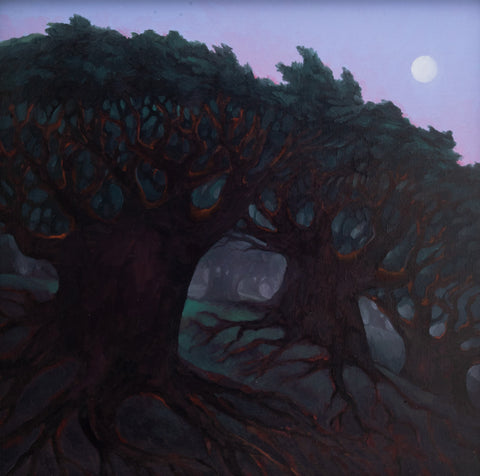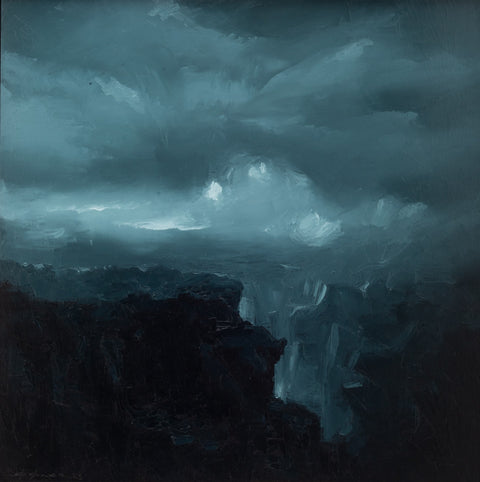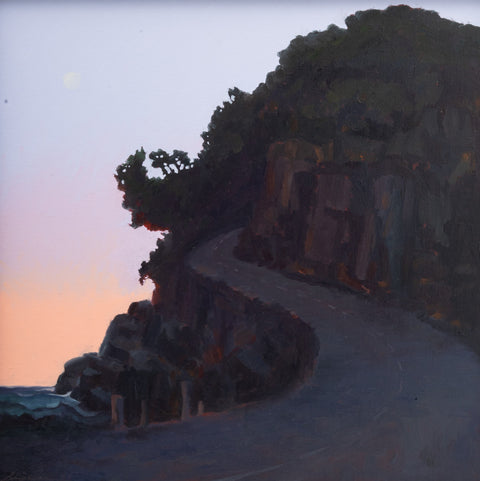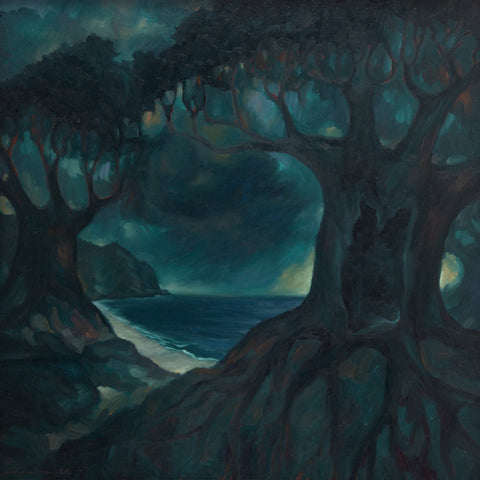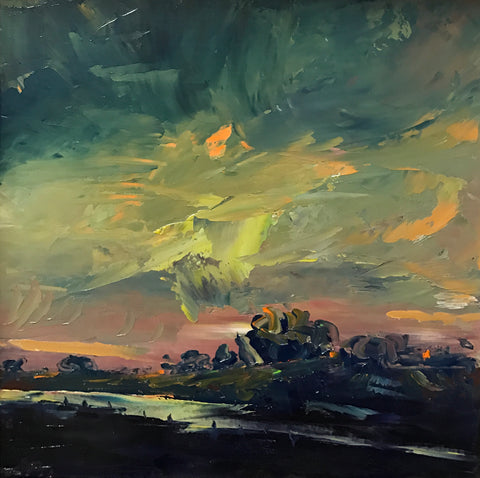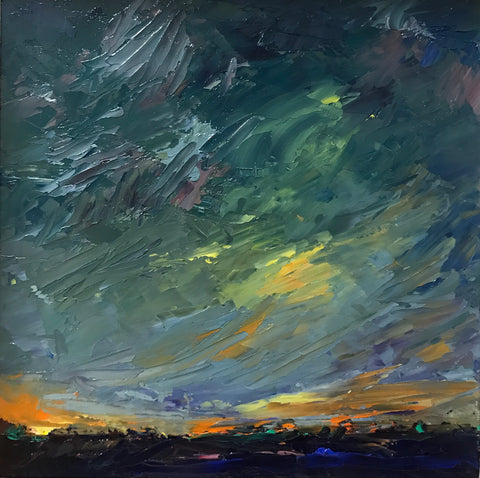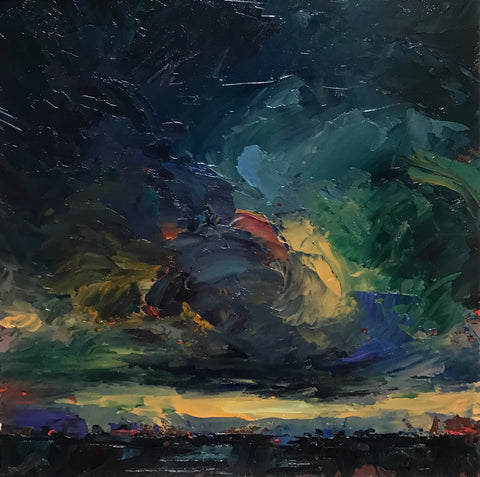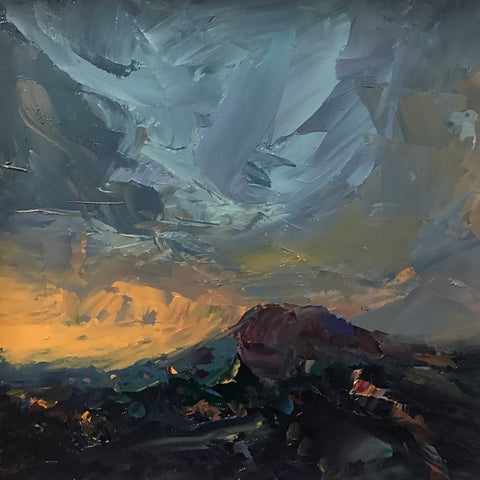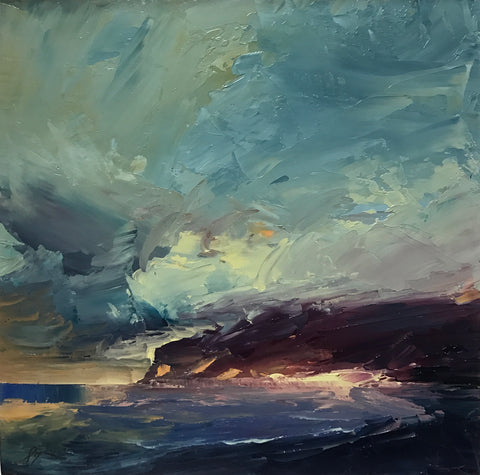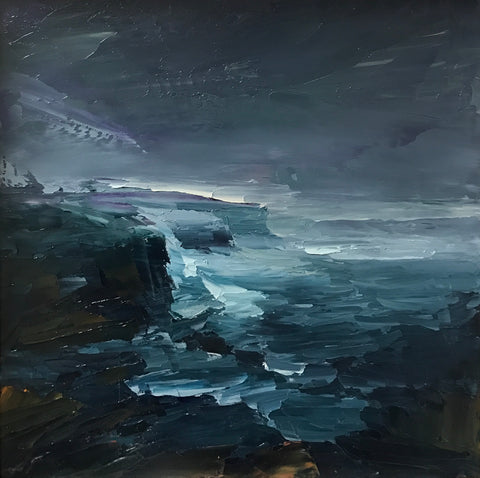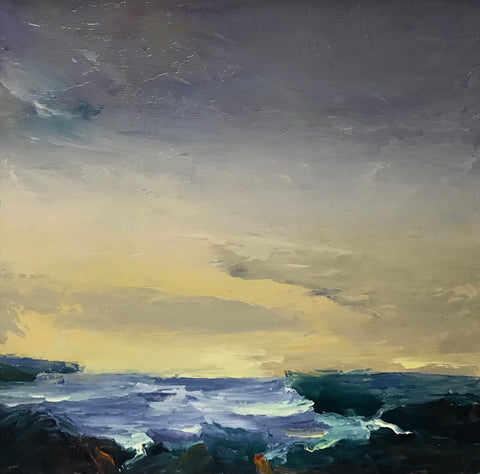
'LANDMINDS'
chronicles of hidden places
The vast and diverse landscapes of Australia have always been a muse to many and to me, they whisper stories - ones that span time, legends, and the very fabric of what it means to be alive in such a wondrous place. In this exhibition, I have endeavoured to capture the sublime, the moody, and the mysterious essences of the landscapes that have cradled and shaped our souls for generations.
Each stroke of my brush, every blend of pigment, seeks to evoke an emotion - a fleeting moment where light meets dark, where dreams blur with reality. The unpredictable beauty of Australia, from its rugged coastlines to its dense, whispering forests, has always held a dark, romantic charm that beckons to be captured on canvas.
I've always believed that art has the power to transport us to different realms. Through the muted tones, contrasting shadows, and the subtle play of light in my work, I wish to draw viewers into the world I see - a world where nature's ominous undertones converge with its magnificent tranquility. A world that's both dreamy and palpable.
The mists that frequently cloak our landscapes, especially during dawn and dusk, represent to me the transient nature of life and memories. They serve as veils, obscuring what's familiar and revealing hidden truths. It's within these ethereal moments that I find the most profound inspiration.
My hope is that as you wander through this exhibition, you'll feel a connection to the land, its stories, and its eternal spirit. Perhaps, like me, you'll find solace in the dreamlike vistas, a resonance in the moody atmospheres, and a deep, stirring recognition of the romanticism that lies beneath the surface of our everyday lives.To every observer: May you find a piece of your own story within these canvases. Dive deep, lose yourself in the mists, and let the land speak to you in its ageless tongue.
Thank you for joining me on this journey.
Warmly,
Sokquon Tran
AWARDS/PRIZES
2018
Finalist – Muswellbrook Art Prize (Painting)
2017
Finalist - Caleen Art Award, Cowra Regional Art Gallery
Finalist - Tattersalls Club Landscape Art Prize, Brisbane (invitational)
Finalist - NSW Parliament Plein Air Painting Prize
2016
Finalist – Paddington Art Prize, Sydney
Finalist – Tattersalls Club Landscape Art Prize, Brisbane (invitational)
2015
Finalist - Tattersall’s Club Landscape Art Prize, Brisbane (invitational)
2014
Finalist (Highly Commended) - Tattersall’s Club Landscape Art Prize, Brisbane
2013
Finalist - Wynne Prize, Art Gallery of NSW, Sydney
Finalist - Paddington Art Prize, Paddington
2009
Finalist - Kings School 30th Art Show, Parramatta
2005
Finalist - Kings School 26th Art Show, Parramatta
2002
Finalist - The Woollahra Sculpture Prize, Woollahra
1992
Sculpture Award - Fairfield Art Festival, Fairfield
1991
Contemporary Art Prize – Fairfield Art Festival, Fairfield
1990
State Grant - collaboration with Sydney Puppet Theatre
1984
Etching Prize - National Art Award, Australia
COLLECTIONS
NSW Parliament House, Sydney
Qantas First Class Captain’s Lounge, Sydney International Airport
Crown Casino Melbourne
Playoust Churcher Architects, Killara
Maurice Byers Chambers, Sydney
The Traditional Restoration Company, Sydney
Whitehouse Institute of Design, Surry Hills
Private and corporate collections throughout Australia, New Zealand, USA, UK, Ireland, France, Germany, Norway, Sweden, Malaysia and China
In the years after the Second World War the term “thousand-yard stare” entered the English language as a way of describing the blank expression on the faces of soldiers who had seen too much horror and experienced too much trauma. If this idea could be applied to an entire nation then Cambodia would be a leading candidate.
Sokquon Tran arrived as a refugee from Cambodia in 1978 at the age of 10. It was the end of the Khmer Rouge’s murderous three-year reign and no-one who had lived in that country could emerge unscathed. Some artists who have experienced trauma feel compelled to become witnesses to history, others seek an entirely different path.
Tran’s imaginary landscapes are far removed from the dramas of history. Serene, beautiful and atmospheric, they are blank screens that encourage a meditative response in the viewer. They are also minimalist landscapes in which tiny amounts of visual information take on a disproportionate significance.
Beneath a huge, cloudy sky we see the dark forms of a landscape and a few tantalising glimpses of light. We recognise that somewhere, on or beyond the far horizon, there are people with homes and cars, full but unknowable lives. That bare suggestion of everyday life adds an important dimension to these paintings, removing them from the realm of abstraction. We may respond instinctively to the skill with which Tran manipulates tones and colours, or his silken touch with the palette knife, but the longer one studies these paintings the more one feels that something is being concealed.
Tran’s version of the ‘thousand-yard stare’ imbues an apparent blankness with a sense of longing. The English language is inadequate to describe this feeling, but the Germans have a word: Sehnsucht. The term denotes an incompleteness that yearns for fulfilment. Happiness is inextricably entangled with melancholy. Past, present and future become one.
Sehnsucht is the antithesis of hopelessness and despair because it believes there is life beyond the most gloomy scenarios – or in Tran’s terms, beyond those great, billowing masses that crowd out his canvases. He asks us to stare into an immeasurable distance, but not into the void. Through the veils of mist and shadow we search unceasingly for that small, transcendental glow
John McDonald, 2018

